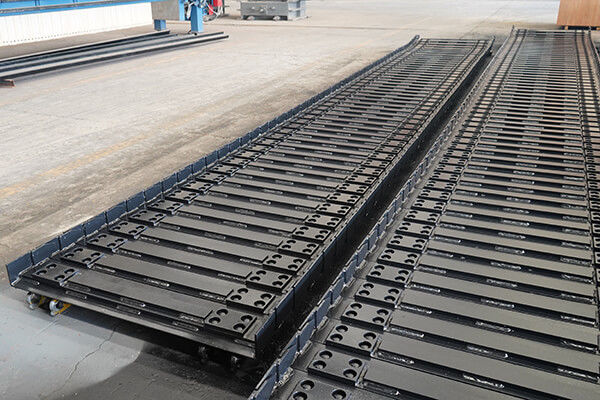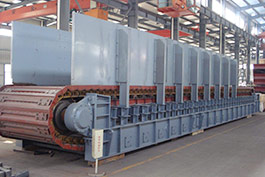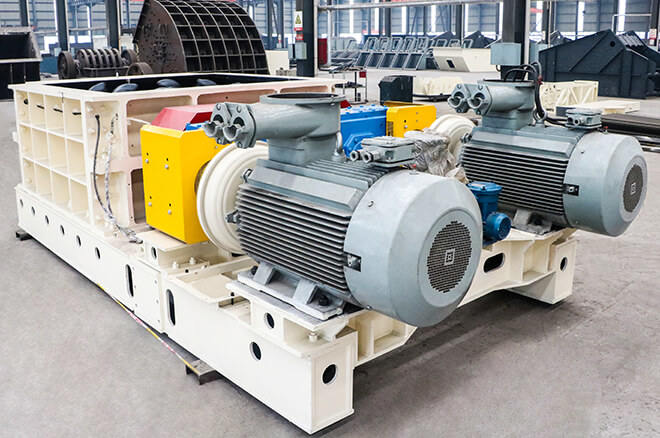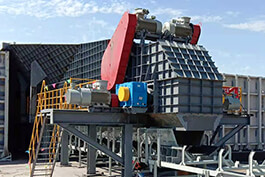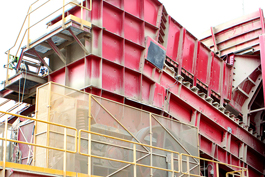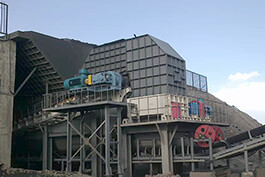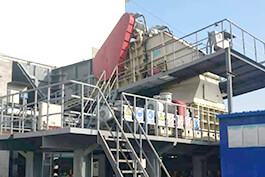Apron feeder is a kind of conveying equipment widely used in mining, metallurgy, building materials and other industries, and its chain plate as a key component directly affects the performance and service life of apron feeder. This article will introduce the production and manufacturing process of apron feeder chain plate in detail.
I. Material selection
The material selection of the chain plate should be determined according to the specific use environment and requirements. Generally speaking, the commonly used materials are high manganese steel, alloy steel and so on. These materials have high wear resistance, strength and toughness, which can meet the needs of apron feeder in harsh operating conditions.
Ⅱ. Casting process
1. Mold making
According to the design drawing of the chain plate, make the casting mold. The precision and quality of the die directly affect the dimensional accuracy and surface quality of the chain plate. The mold material is generally selected as wood, metal or plastic, etc. In the production process, it is necessary to ensure that the structure of the mold is reasonable, the strength is sufficient, and the mold can be easily removed.
2. Melting and pouring
The selected material is put into a furnace for melting so that it reaches the appropriate temperature and composition. In the melting process, the furnace temperature, melting time and chemical composition should be strictly controlled to ensure the quality of the material. After smelting is complete, the molten metal is poured into the mold for pouring. During the pouring process, attention should be paid to controlling the pouring speed and temperature to avoid defects such as insufficient pouring and porosity.
3. Cooling and stripping
After pouring, the casting is allowed to cool naturally in the mold. After the casting is cooled to a certain temperature, the demoulding operation is performed. Care should be taken to avoid damaging the casting when releasing the mold.
Iii. Heat treatment process
In order to improve the hardness and wear resistance of the chain plate, it is necessary to heat treat the casting. Common heat treatment methods are quenching and tempering.
Step 1 quench
After the casting is heated to a certain temperature, it is quickly put into the quenching medium for cooling. The quenching medium can be water, oil or salt water. The purpose of quenching is to make the casting obtain a high hardness, but at the same time, it will also make the casting produce a large internal stress.
2. Temper
There is a large internal stress in the castings after quenching, in order to eliminate these internal stresses and improve the toughness and stability of the castings, it is necessary to temper treatment. After the quenched casting is heated to a certain temperature, it is kept warm for a period of time, and then slowly cooled. The temperature and time of tempering are determined according to the characteristics and requirements of the material.
Iv. Machining technology
Ⅴ. The chain plate after heat treatment needs to be machined to achieve the size and accuracy required by the design. Machining processes include turning, milling, drilling, etc.
1. Turning
The outer circle and end face of the chain plate are turned with a lathe to ensure the dimensional accuracy and surface roughness of the chain plate.
2. Milling
The surface of the chain plate is milled with a milling machine to remove the defects of the cast surface and improve the surface smoothness.
Step 3 drill holes
According to the design requirements, drilling is carried out on the chain plate to install connecting bolts and other parts.
Vi. Surface treatment technology
Ⅶ. In order to improve the corrosion resistance and wear resistance of the chain plate, it is necessary to perform surface treatment. The commonly used surface treatment methods are spray painting, galvanized and so on.
Step 1 spray paint
A layer of anti-rust paint or wear-resistant paint is sprayed on the surface of the chain plate to protect the surface of the chain plate from corrosion and wear.
Step 2 galvanize
The chain plate is placed in the galvanizing tank for galvanizing treatment, so that a zinc layer is formed on the surface of the chain plate to improve its corrosion resistance.
Ⅷ. Quality testing
In the production and manufacturing process of the chain plate, strict quality inspection is required to ensure that the quality of the chain plate meets the design requirements. Quality inspection items include dimensional accuracy, surface quality, hardness, chemical composition, etc. The testing methods can be measured by measuring tools, non-destructive testing, chemical analysis, etc.
In summary, the production and manufacturing process of
apron feeder chain plate includes material selection, casting process, heat treatment process, machining process, surface treatment process and quality inspection. Only in strict accordance with the process requirements in each link of the operation, in order to produce high-quality chain plate, to ensure the normal operation and service life of apron feeder.


